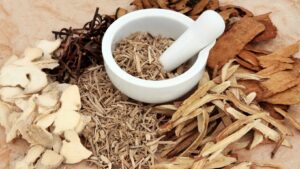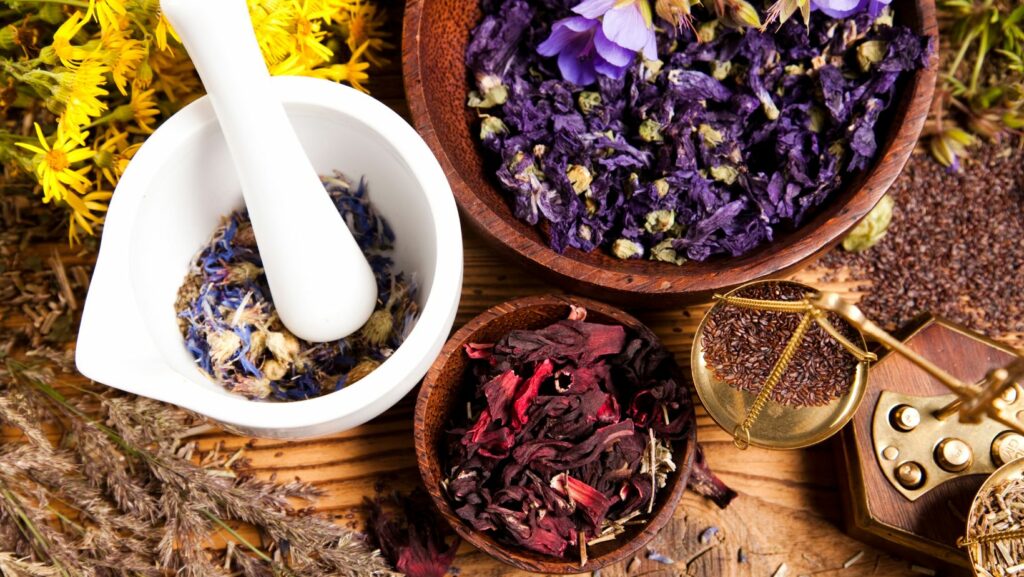In the bustling world of modern medicine, there’s a quiet revolution happening. More and more people are turning to the gentle healing arts of acupuncture and herbal medicine for relief. These ancient practices, steeped in centuries of tradition, are making a comeback in our high-tech, high-stress society.Acupuncture and herbal medicine aren’t just about needles and plants. They’re holistic approaches that tap into the body’s innate ability to heal itself. They’re about balance, wellness, and nurturing the mind-body connection.In this article, we’ll delve into the fascinating world of these healing arts, shedding light on their origins, benefits, and why they might be the perfect addition to your wellness routine.
Gentle Healing Arts: Acupuncture And Herbal Medicine
The Philosophy of Gentle Healing
 Gentle healing, driven by the principles of Acupuncture and Herbal medicine, takes root in the innate ability of the body to heal itself. The philosophy is grounded in the traditions of Traditional Chinese Medicine (TCM). These practices understand the body as an ecosystem of interconnected systems, where balance fosters health, and imbalance cultivates disease. Acupuncture, delivering delicate stimulation to specific points on the body, encourages balance and promotes wellness. On the other hand, herbal medicine employs natural plant substances to strengthen, maintain, and rejuvenate the body’s healing processes. Together, these healing arts aim to restore equilibrium, thereby enabling the body’s natural capacity to heal and thrive.
Gentle healing, driven by the principles of Acupuncture and Herbal medicine, takes root in the innate ability of the body to heal itself. The philosophy is grounded in the traditions of Traditional Chinese Medicine (TCM). These practices understand the body as an ecosystem of interconnected systems, where balance fosters health, and imbalance cultivates disease. Acupuncture, delivering delicate stimulation to specific points on the body, encourages balance and promotes wellness. On the other hand, herbal medicine employs natural plant substances to strengthen, maintain, and rejuvenate the body’s healing processes. Together, these healing arts aim to restore equilibrium, thereby enabling the body’s natural capacity to heal and thrive.
The Rise of Alternative Medicine
 The term “alternative medicine” usually denominates practices that aren’t part of conventional Western medicine. While once relegated to the periphery, the growth of acupuncture and herbal medicine is a testament to a broader cultural shift towards alternative forms of healing. It reflects an increased interest in natural and holistic approaches to health and wellness.
The term “alternative medicine” usually denominates practices that aren’t part of conventional Western medicine. While once relegated to the periphery, the growth of acupuncture and herbal medicine is a testament to a broader cultural shift towards alternative forms of healing. It reflects an increased interest in natural and holistic approaches to health and wellness.
In 2017, a report from the National Center for Complementary and Integrative Health highlighted the rise of acupuncture. The study pointed out that nearly 6.3 million Americans had tried acupuncture, a significant increase compared to the previous decade.
The use of herbal medicine has also experienced similar growth. The World Health Organization (WHO) estimated in 2019 that 70% to 80% of the global population relies on herbal medicine for some component of their primary health care.
This noteworthy climb in the popularity of alternative medicine indicates a growing public desire for treatments that prioritize balance, wellness, and the body’s natural healing abilities. This trend underscores the possibilities of integrating the gentle arts of acupuncture and herbal medicine into one’s healthcare routine.
Acupuncture as a Healing Art
Encompassing an intricate understanding of the human body’s energy system, acupuncture stands as a revered healing art. It endorses prevention, balance, and long-term wellness, navigating the realm of alternative medicine with ceaseless traction. A related modern technique, dry needling, though distinct in philosophy and origin, similarly uses thin needles to stimulate muscle tissue for pain relief, often practiced within Western physical therapy.
Origins and Principles of Acupuncture
Acupuncture, a linchpin in Traditional Chinese Medicine (TCM), has seen over 2500 years of evolution. It rests on the Taoist philosophy of attaining harmony and balance. The modality operates on the premise of an omnipresent life force or energy, called Qi (pronounced as ‘chee’). Disruptions or blockage in the harmony of Qi results in a condition or an ailment. Acupuncture thus, through strategic stimulation of certain points on the body, called acupoints, rejuvenates the flow and restores balance.
Common Conditions Treated with Acupuncture
 Acupuncture, though comprehensive, shows exceptional results in treating certain conditions. Comprising but not confined to chronic pain, mental health disorders, and autoimmune diseases. By employing evidence from World Health Organization, Acupuncture serves as a veritable option for a diverse array of conditions. Enlisted here are three common ailments.
Acupuncture, though comprehensive, shows exceptional results in treating certain conditions. Comprising but not confined to chronic pain, mental health disorders, and autoimmune diseases. By employing evidence from World Health Organization, Acupuncture serves as a veritable option for a diverse array of conditions. Enlisted here are three common ailments.
- Chronic Pain: Chronic lower back pain, osteoarthritis, and migraines receive notable relief through Acupuncture. The focus remains on the reduction of inflammation and promotion of endorphins, the natural painkillers.
- Digestive Disorders: Conditions such as irritable bowel syndrome, gastritis, and chronic ulcers show promising improvement with Acupuncture. The therapy aims at harmonizing digestive function and reducing inflammation.
- Respiratory Ailments: Chronic conditions like asthma, bronchitis, and allergies witness sizeable improvement. Here, Acupuncture seeks to regulate immune responses and reduce the frequency of symptomatic flare-ups.
Acupuncture, with its traditional roots and evolving applications, stands firm in its designation as a gentle healing art.

